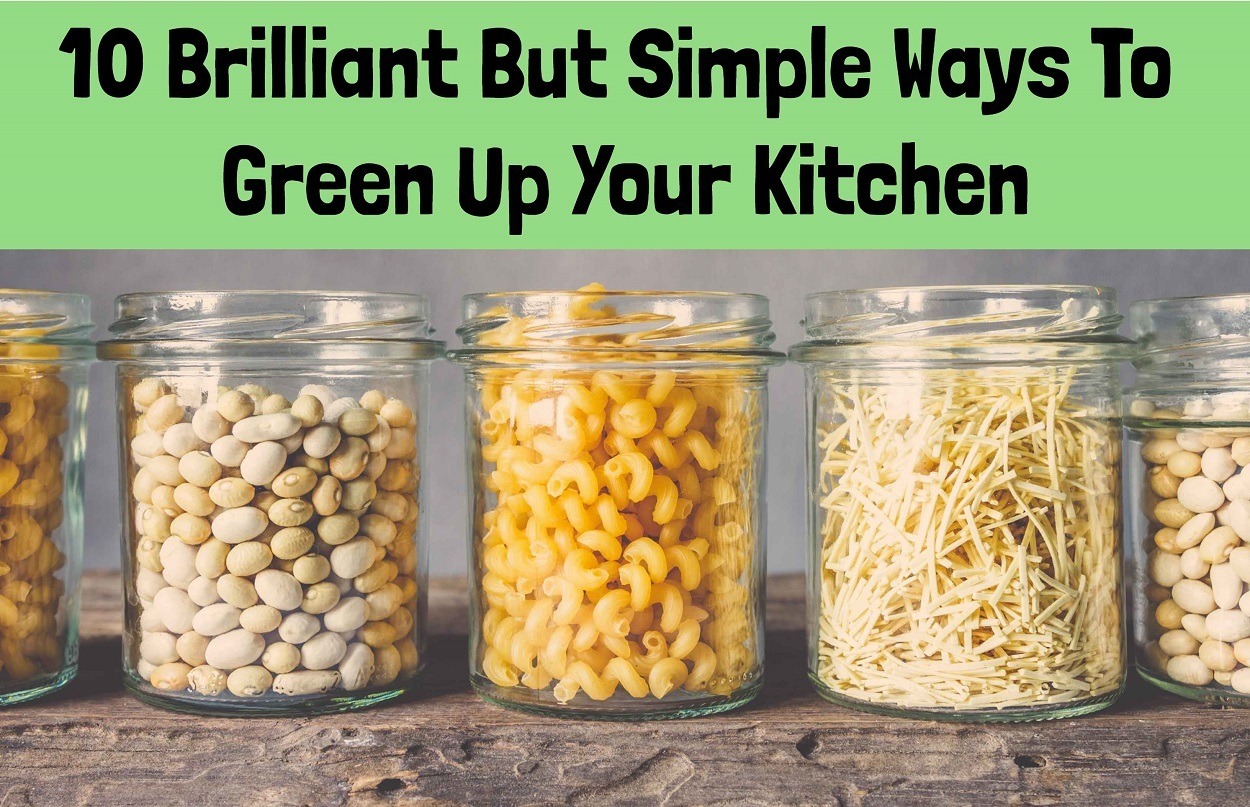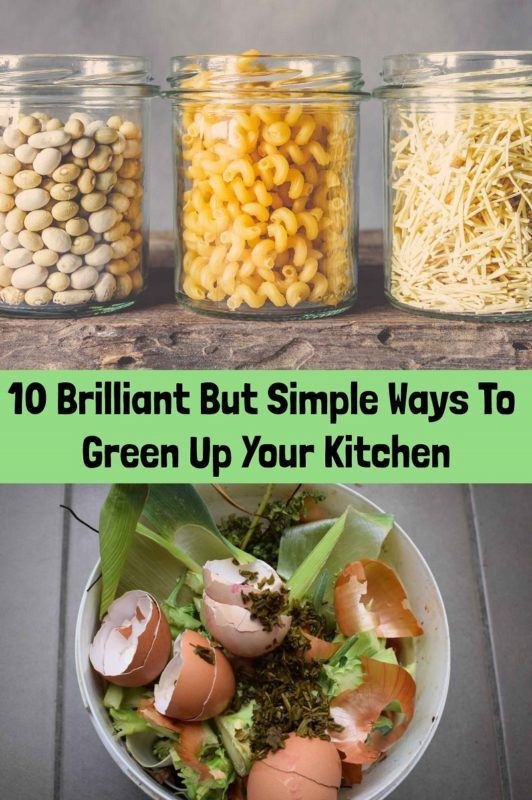
As the heart of any home, the kitchen tends to be a place of congregation. It’s where we cook our meals, enjoy our food, and chat about our days.
Making your kitchen a more environmentally friendly space has plenty of advantages over the status quo. Not only is it healthier for you and your loved ones, it’s much more economical and far less wasteful.
If you are planning a large renovation or are just looking for some quick and easy tips, here are our top 10 ways to go green in the kitchen:
1. Eat a Climate-Friendly Diet
Whether you live to eat or eat to live, our daily sustenance has a massive impact on ecological systems around the globe. Lessen the mark you leave on the planet by practicing these climate-friendly food tenets:
Eat Locally – The less distance your food needs to travel to your plate, the better. Shop your local farmer’s markets to reduce transport emissions while also supporting organic food producers in your area.
Eat Fresh – Frozen, canned, refined, and processed foods might be convenient but they are also lacking in nutrition, contain synthetic additives, and are often sold in excessive packaging. You can avoid these pitfalls by eating real food. Here are 65 staple foods you can stop buying and start making.
Grow Your Own – There are so many benefits of tending a garden, not least of which is producing fresh, organic food.
Eat Less Meat – Modern agricultural practices are a major contributor to climate change. Eating more fruits and vegetables, grains, nuts, and seeds is a whole lot healthier for you and kinder to the planet. Here are some tips to ensure you receive good nutrition when going vegetarian.
Don’t Waste Food – Americans tossed away 20 pounds of food per person per month in 2012, and much of it was still perfectly edible. With just a little planning, we can drastically reduce our food waste.
2. Preserve Food With Beeswax Wraps
Ditch the single use plastic cling wrap (which can’t even be recycled!) and use all natural beeswax wrap instead to preserve your leftovers.
Made from organic cotton cloths that have been coated in beeswax, these wraps can be washed and reused again and again. When they have reached the end of their usefulness, they are 100% biodegradable and can be tossed in the compost or wrapped around kindling to be used as a fire starter.
Pick up a 3 pack of Bee’s Wrap here. Or check out our tutorial for step by step instructions on how to make your own beeswax food wraps.
3. Invest in Glass Storage Containers
You won’t need to worry about BPA and other chemicals leaching into your food when you invest in a good quality set of glass food storage containers. Made from durable and shock resistant borosilicate glass, take care of them and they will easily last a lifetime.
Check out this 12-piece set, safe for use in the dishwasher, oven, microwave, and freezer.
4. Use Cast Iron Cookware
Modern frying pans, made from aluminum or stainless steel, are typically coated in non-stick chemicals like Teflon. Made up of long chain perfluorinated chemicals, Teflon is a toxic substance that seeps into the food you cook in it. Worse still, when heated at common cooking temperatures, Teflon releases a slew of chemicals into the air. When heated above 1200°F, it releases carbon tetrafluoride, an ozone depleting greenhouse gas.
Superior in every way, cast iron cookware is versatile, non-sticking, and incredibly durable. Since it is seasoned with oil, it won’t leach out any chemicals into the air or into your food. You can use it on the stove top, in the oven, and on the barbecue without worrying about it breaking or melting. And the more you use your cast iron pans, the better food tastes.
Replace your existing cookware with this 5 piece cast iron set that includes two skillets, a griddle, and Dutch oven.
5. Stop Using Paper Towels
Although single use plastics get a lot of (much deserved) flak, let’s not forget how incredibly dirty the paper manufacturing industry is and its environmental impact on air, water, and waste pollution.
Swap out conventional single use paper towels for reusable, earth friendly alternatives. We especially love Bamboo Towels – each sheet can be washed and reused at least 120 times. And because they are made from fast growing bamboo trees which grow 3 feet per day, they are a much more sustainable choice than other tree materials.
6. Set Up a Composting System
When food scraps and other organic waste end up at the landfill, they are buried in a “dry tomb”. This airless and arid environment alters the natural decomposition process; in lieu of oxygen and moisture, anaerobic microorganisms break down organic matter and release greenhouse gases that leach out into the atmosphere. Landfill gas is composed of about 50% carbon dioxide and 50% methane. Methane gas holds 28 to 36 times more heat than carbon dioxide.
A powerful way to mitigate your individual contribution to climate change is to dispose of food and yard waste with a composting system. Composting breaks down organics with the help of millions of aerobic organisms that require oxygen and moisture to do their work. While composting does generate carbon dioxide emissions, it is far less harmful than dry tombing. And at the end of the process, you will be rewarded with hummus, a nutrient-rich soil amendment.
There is a composting system for practically everyone, even if you have very limited space. Compost heaps are certainly a traditional, tried and true method that can be set out in the open, placed in covered bins, or enclosed in a rotating tumbler. Trench composting is invisible and odorless, simply bury food scraps directly in the garden. Vermicomposting is great for a year round, indoor set up that produces super nutrient rich worm castings. Another indoor method, bokashi composting differs from conventional decomposing of organics and breaks things down through the process of fermentation.
7. Put Food Scraps to Good Use
Another way to deal with organic waste is to squeeze every last bit of usefulness out of it. Here are a few typically tossed items that are actually quite helpful to have on hand:
Spent Coffee Grounds
After each brew, scoop out the coffee grounds and stow them in the fridge. They can be used as a free fertilizer that boosts nitrogen in plants as well as lower the pH for acid loving cultivars. Coffee grounds can also be used to repel pests, exfoliate your skin, absorb odors, and more.
Used Tea Bags
Spent tea bags have plenty of additional life left in them after the tea’s been made. Cut open the bag and drop the leaves into the soil of your indoor and outdoor plants for a free boost of nutrients. Or keep them in the bag to shine wooden surfaces, sooth irritated skin, condition your hair, or as a natural dye.
Banana Peels
Enriched with potassium, banana peels are an excellent fertilizer for plants and seedlings. Use the moistened side of the peel to shine shoes and dust houseplants. You can also make vinegar, tenderize meat, or dry them out to feed your chickens, rabbits, and pigs. Check out more banana peel uses here.
Eggshells
An abundant and free source of calcium, save your eggshells for the garden to fertilize your plants, deter pests, and make some adorable seed starter pots. You can also grind up and eat eggshells to strengthen bones, support your joints, and remineralize your teeth.
Additional Ways to Use Up Food Scraps
You can repurpose food scraps in endless ways – from spoiled wine and fruit pits to bones and bread ends. Check out our roundup here.
8. Add Air Purifying Plants
Between building materials, furnishings, carpets, combustion products, and household chemicals, the home can be a major source of indoor air pollution, with some estimates stating it can be anywhere from two to ten times greater than pollutants we breathe outdoors. If you burn scented paraffin candles or use plug in air fresheners regularly, you’re only making your indoor air quality worse.
You can literally green up your kitchen (and the rest of the home) by adding houseplants that will clean the air.
According to a study conducted by NASA in 1989, English ivy (Hedera helix), peace lily (Spathiphyllum “Mauna Loa”), bamboo palm (Chamaedorea seifrizii), mother-in-law’s tongue (Sansevieria laurentii), marginata (Dracaena marginata), and Janet Craig (Dracaena deremensis “Janet Craig”) were the most effective for removing all three pollutants tested, formaldehyde, benzene, and trichloroethylene. Another study from 1993 also identified several cultivars – including emerald gem (Homalomena spp.) and parlour palm (Chamaedorea elegans) – that absorb ammonia and xylene as well.
Interestingly, both studies noted that soil surface area is just as important for the removal of toxins as is the plant’s foliage. So when you pot up plants to place strategically around the home, use wide pots that allow the plant’s roots to extend outward and near the soil’s surface to maximize their ability to purify the air.
Related Reading: 17 Best Houseplants For Your Kitchen
9. Use Natural Cleaning Products
If you’ve got white vinegar, baking soda, and some fresh lemons, you already have practically everything you need to scour and disinfect any area of the home. These cheap and all natural cleansers can easily tackle a kitchen’s worst messes – check out our 40 green cleaning tips here.
You may also purchase natural cleansers for ease and convenience. We like Truce All Purpose Cleaner for wiping clean multiple surfaces around the home. For scouring, Bon Ami Cleaning Powder is a gentle abrasive that won’t scratch your sink, stove, and countertops.
10. Be More Energy Efficient in the Kitchen
It’s no surprise that the kitchen appliances take up a large share of home energy use. Between the refrigerator, stove, dishwasher, as well as other smaller appliances, the kitchen can be a real energy hog.
When your kitchen appliances are ready to be replaced, upgrading to energy efficient models has both immediate and long term benefits. Appliances with the Energy Star label use about half the amount of electricity as standard models, saving you money on day to day operating costs. And while it used to be that energy efficient appliances were more expensive than their non-certified counterparts, higher demand for Energy Star products over the years has made their upfront purchasing costs much more competitive. See also the many rebates, tax credits, and other incentive programs to go green.
But purchasing energy efficient appliances is only part of the battle. How we use them is just as important for minimizing energy consumption:
- Refrigerators with top mounted freezers use 10% to 25% less energy than bottom mount and side-by-side fridges.
- Microwaves use half as much energy as a stove.
- Every time you open the door, the oven loses around 25% of its heat.
- Because pressure cookers cook food so fast, they use 50% to 75% less energy than the oven or stove top.
- When cooking on the stove top, select the burner size that best fits the size of the pot you’re using; heat is wasted when the burner is larger than the pot.
- Use smaller appliances, like a crock pot, toaster oven, or convection oven to prepare small or one pot meals.
Pin This To Save For Later

